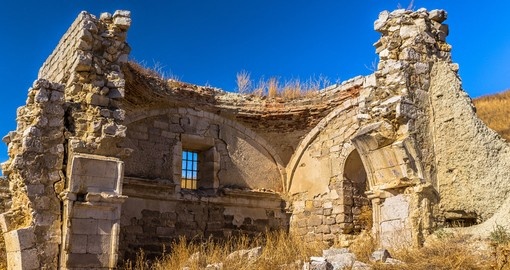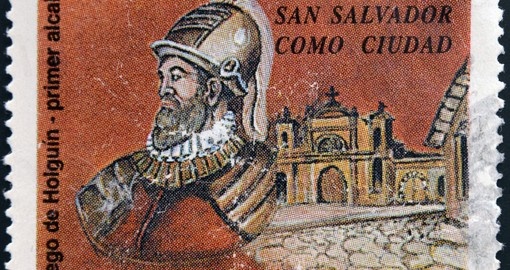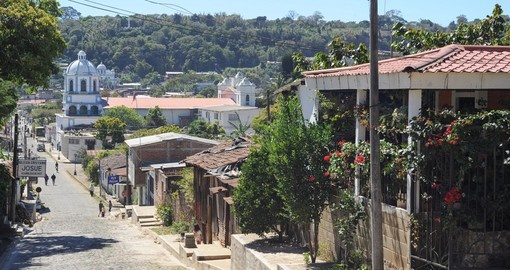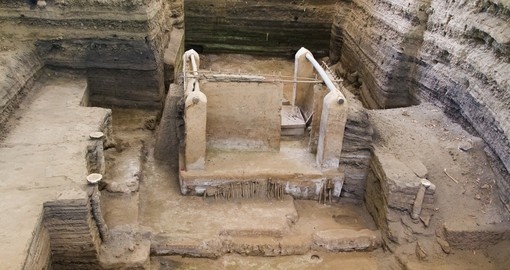El Salvador History
The earliest inhabitants of El Salvador were Paleo-Indian peoples who lived in the country around 10,000 years ago. Archaeological evidence suggests that El Salvador was an important early trading centre as remains show influences from other cultures. When the Spanish arrived at the beginning of the 16th century, they encountered the Pipils who were descendants of the Mexican tribes the Toltecs and the Aztecs.
Pedro de Alvarado, the Spanish conquistador, arrived in the country in 1524. Despite initially struggling against the Pipil people, the Spanish were successful in establishing settlements that focussed heavily on agriculture. The main crops throughout the 1700s included cotton, balsam and indigo which became an important export for the Salvadoran economy. Unfortunately, as was the case in many of the colonies, a small elite group controlled the majority of the area’s wealth and as a result, indigenous populations suffered.
The conditions of the indigenous populations as well as those of African slaves brought in to work the plantations continued to worsen culminating in a revolt led by Father José Matías Delgado in 1811. While the revolt was stopped quickly, the anger remained and talks of independence continued. It would take a further ten years, but on 15 September 1821, El Salvador and the other Central American colonies were liberated from Spanish rule. While El Salvador initially joined Mexico upon independence, it later left to form the Federal Republic of Central America, establishing its own constitution in 1824.
Despite now being its own country, El Salvador was not free from the problems that had plagued it before its independence. There was still a small wealthy elite, a great deal of the population was still poor (even though slavery had been abolished) and rivalries between nations were rampant. In 1841, El Salvador made the decision to leave the Federal Republic of Central America which collapsed a year later.
By the end of the 19th century, coffee production had replaced indigo as El Salvador’s most important crop. Unfortunately, the wealth that was accumulated was not distributed evenly and wages for workers remained poor. At the dawn of the 20th century, coffee production accounted for nearly 95% of the country’s income, but only 2% of the population controlled the money. When the stock market crashed in the United States in 1929, it had dire consequences for El Salvador as it negatively affected coffee prices.
An uprising lead by peasants and indigenous people occurred in 1932 causing the military to respond. What followed was known as la Matanza (the Massacre) which saw the deaths of some 30,000 people. Following la Matanza, the military took full control of the nation. The economy of the next decades continued to suffer and during the 1970s, people from the left and from the right fought for power. After the assassination of Archbishop Romero, a civil rights advocate, by right-wing elements, civil war broke out in the country.
The war continued for twelve years with an estimated death toll of 75,000 people. The US contributed military and civil aid and peace talks were mediated by the United Nations. A ceasefire took effect on February 1, 1992. The Farabundo Marti Liberation Front (FLMN), once leftist guerillas, formed a popular political party and had initial success in congressional elections. It would be 2009 before they would win the presidential election when Mauricio Funes became president.
Funes has presided over many important social reforms in the country including providing shoes, clothes and meals for school children. Tourism remains strong in El Salvador as people are realising that this small country should not be overlooked. With excellent beaches, great cities, strong infrastructure and rich history, El Salvador is a truly unique destination.
El Salvador Travel Information
At Goway we believe that a well-informed traveller is a safer traveller. With this in mind, we have compiled an easy-to-navigate travel information section dedicated to El Salvador.
Learn about the history and culture of El Salvador, the must-try food and drink, and what to pack in your suitcase. Read about El Salvador's nature and wildlife, weather and geography, along with 'Country Quickfacts' compiled by our travel experts. Our globetrotting tips, as well as our visa and health information, will help ensure you're properly prepared for a safe and enjoyable trip. The only way you could possibly learn more is by embarking on your journey and discovering El Salvador for yourself. Start exploring… book one of our El Salvador tours today!
Extend Your Trip
After your El Salvador tours, why not consider another of Goway's Latin America tours. These include a large selection of other exciting countries in Central and South America. We offer Chile vacation packages and Easter Island tours, Ecuador vacation packages which include Galapagos cruises, Peru vacation packages which include Machu Picchu tours and Brazil tours including Iguassu Falls tours among many others.
Book your El Salvador tour with Goway!
 LATIN AMERICA by Goway is an exclusive division that specializes in planning and organizing El Salvador tours and experiences. Choose from one of our independent stopover modules and more, We want to be your first choice when next you go globetrotting to El Salvador.
LATIN AMERICA by Goway is an exclusive division that specializes in planning and organizing El Salvador tours and experiences. Choose from one of our independent stopover modules and more, We want to be your first choice when next you go globetrotting to El Salvador.
Get a Trip Quote Order a Brochure





















